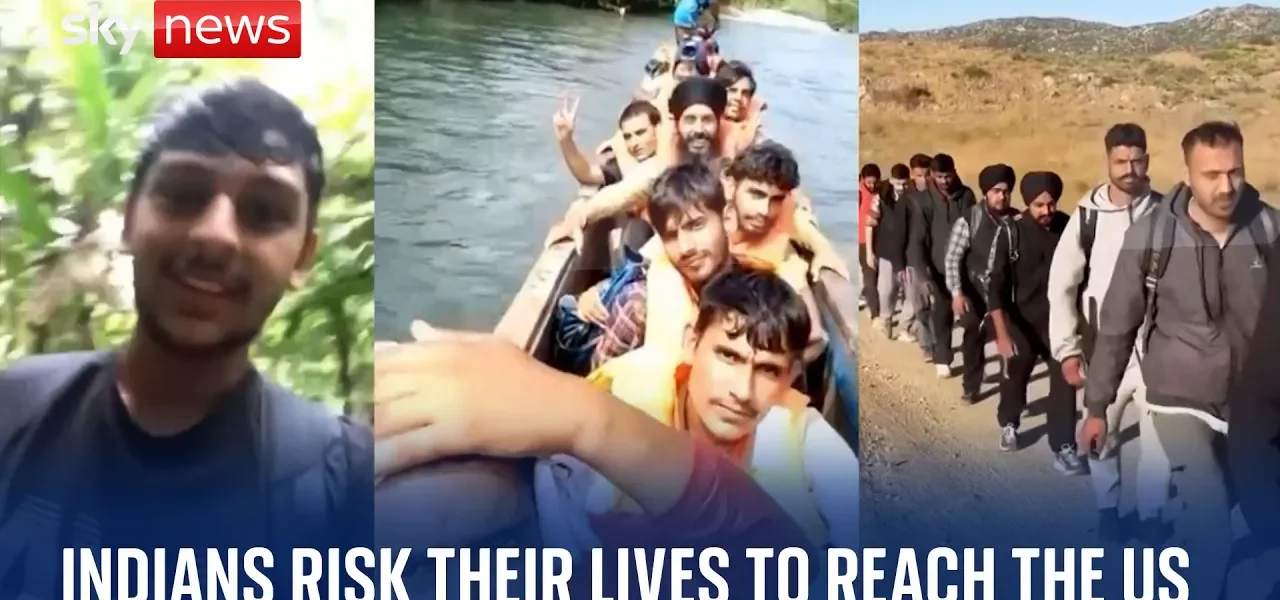Dangerous Journeys of Indian Migrants to America and Europe

This article delves into the perilous journeys undertaken by Indian migrants as they navigate treacherous paths, often falling prey to criminal gangs, in their quest for a better life in America and Europe. With rising numbers of illegal migrants, the discussion highlights the socio-economic factors driving this trend and the heart-wrenching stories of those involved.
Introduction
The phenomenon of illegal migration has become a pressing issue in recent years, particularly among Indian nationals seeking to escape economic hardships and pursue opportunities abroad. As the third largest group of illegal migrants in the United States, Indians are increasingly willing to undertake dangerous journeys, often involving treacherous treks through jungles and reliance on duplicitous traffickers. This article explores the various facets of this crisis, shedding light on the motivations behind these perilous migrations, the human stories entwined with them, and the broader implications for society.
The Soaring Numbers of Indian Migrants
Statistics reveal a staggering increase in the number of illegal migrants from India. In the last year alone, the U.S. Border Protection Agency apprehended approximately 100,000 individuals. However, this figure only accounts for those who were caught; many more embark on their journeys with hopes of a successful crossing.
Growing Trends in Migration
- India has seen a significant rise in the number of individuals attempting to migrate illegally.
- Socio-economic factors, including poverty and unemployment, play a crucial role in driving this trend.
- The allure of better opportunities in Western countries continues to attract many individuals.
The Human Cost of Migration
Behind the statistics lie harrowing personal stories that highlight the risks associated with illegal migration. For many, the journey is fraught with danger, deception, and despair.
The Story of Subash
Subash’s experience is a chilling illustration of the dark side of human trafficking. After paying over $50,000 to traffickers, he was instead taken to Kathmandu, where he faced kidnapping and extortion. With his family unaware of his fate, they were manipulated into paying additional ransoms.
Tragic Outcomes
Many families are left devastated by the loss of their loved ones. For instance, a family sold their property and took loans to fund their relative’s journey, only to discover that he had been killed by gangs along the route.
- Families often bear the financial burden of these migrations.
- Some individuals never return, leaving families in perpetual mourning.
- The emotional toll is significant, as families grapple with uncertainty and grief.
The Role of Traffickers
The rise of traffickers has made illegal migration a multi-billion dollar industry. Traffickers prey on vulnerable populations, promising safe passage in exchange for exorbitant fees.
The Operations of Traffickers
Traffickers utilize various tactics to lure individuals into their networks:
- Creating false narratives of successful migration.
- Using counterfeit documents to facilitate illegal crossings.
- Exploiting social media to showcase the lavish lifestyles of migrants abroad.
Impact on Communities
The consequences of trafficking extend beyond individual families, affecting entire communities:
- Increased crime rates associated with trafficking networks.
- Community divisions as families struggle with loss and uncertainty.
- Economic instability as resources are drained in attempts to fund risky migrations.
Government Response and Crackdowns
As the scale of illegal migration grows, government authorities are ramping up efforts to combat human trafficking. Recent crackdowns have led to the arrest of numerous traffickers, yet the challenge remains daunting.
Efforts to Combat Trafficking
Authorities are implementing various strategies to address the issue:
- Increased surveillance and policing of known trafficking routes.
- Public awareness campaigns to educate potential migrants about the risks.
- International cooperation to dismantle trafficking networks.
Conclusion
The dangerous journeys of Indian migrants seeking better lives in America and Europe highlight a complex interplay of socio-economic factors, personal aspirations, and the darker realities of human trafficking. While many individuals undertake these perilous paths, the risks they face are profound and often tragic. It is crucial for society to address the root causes of such migrations and provide support to vulnerable populations. If you or someone you know is considering migration, seek out safe and legal avenues to ensure a better future.
“`




